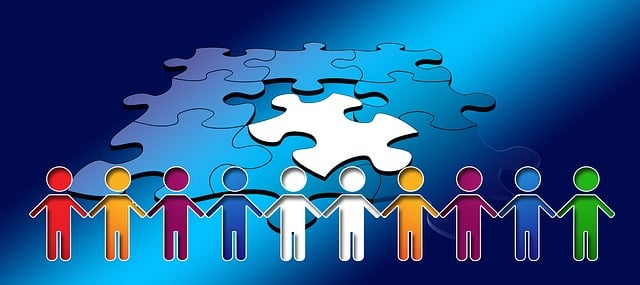
Migration is a phenomenon that has been occurring for hundreds of years, yet it is still a complex and ever-evolving topic. It has been an important factor in the growth and development of societies, economies, and cultures around the world.
Whether it is people moving from one country to another in search of a better life or animals following seasonal patterns to find food, migration has a major impact on the world. In this article, we will explore what migration is, the different types of migration, and the various motivations and impacts of this phenomenon.
One in 30 persons are migrants

What is a Simple Definition of Immigration?
Immigration refers to the act of moving into a country with the intention to settle there, either temporarily or permanently. It’s the opposite of emigration, which is the act of leaving one’s country to settle in another.
IOM Definition of “Migrant”
A umbrella term which has not been defined in international law, reflecting the general lay understanding of people who have relocated from their normal home in a foreign country temporarily or permanently. The term includes several well-defined legal types of people, such as migrant workers. Note: On international levels there is no universal definition of “migrant”.
Word History
Etymologie French / Latin ; French migration, migrationratio, migrated from Latin migration- / migratio from migratus + -ion / mirr io

Immigration vs Emigration
While both immigration and emigration involve the movement of people across borders, they represent opposite directions of movement. Immigration is when individuals enter a new country to reside, whereas emigration is when individuals leave their home country to live elsewhere.
Meaning of Immigration in History
Throughout history, immigration has played a pivotal role in shaping nations, cultures, and economies. From the early settlers in new lands to modern-day refugees seeking asylum, the reasons for immigration have varied. Historically, people have immigrated to escape persecution, wars, famines, or to seek better economic opportunities. The movement of people has led to cultural exchanges, the spread of ideas, and has been a driving force behind globalization.

Migration: A Short Answer
Migration is the process of relocating from one place to another, typically for the purpose of finding a better life. It involves moving from one’s home country to another, or from one region to another, in search of better living conditions, employment, education, and other opportunities. Migration can be voluntary or involuntary, temporary or permanent, and involves a variety of social and economic factors.
Migration has been an important factor throughout history, with people and entire populations migrating for a variety of reasons. People have moved in search of better economic opportunities, to escape persecution or war, or to join family members who had already migrated. In modern times, migration has increased, particularly as a result of globalization, with people relocating to take advantage of economic and educational opportunities in new countries.
The effects of migration can be both positive and negative. Positively, migration can lead to economic growth, as migrants bring new skills, knowledge, and experiences that can benefit the receiving country. It can also lead to social and cultural enrichment, as migrant populations bring new customs, languages, and cultures that can contribute to the diversity of the receiving society. On the negative side, migration can lead to a strain on resources and infrastructure, as well as the potential for cultural conflict.
Migration is an important part of human history and continues to be a major factor in the world today. While there are both positive and negative effects associated with migration, the potential benefits of increased economic and social integration should not be overlooked. Migration can be a powerful force for improving the lives of both individuals and nations.
Migration Definition: What Is It?
Migration is the process of moving from one place to another, either temporarily or permanently. It is a common phenomenon that has occurred throughout human history, with people relocating for various reasons, such as seeking better living conditions, economic opportunities, or fleeing from violence.
Migration can be divided into two main categories: international and internal. International migration involves people moving from one country to another, while internal migration is when people move within the same country. International migration is often referred to as immigration, while internal migration is referred to as emigration.
Migration has both positive and negative effects on the countries involved. On the positive side, it can lead to economic growth by providing a source of labor and capital. It can also lead to a more diverse and multicultural society, which can bring many benefits. On the negative side, migration can lead to overpopulation and competition for resources, as well as economic, social, and political instability.
Migration can also have an impact on the environment. For example, increased migration can lead to increased pressure on natural resources, such as water and land, and can lead to greater pollution and degradation of the environment.
Overall, migration is a complex phenomenon that has both positive and negative impacts on the countries involved. It is important to consider the potential effects of migration before making any decisions.
Migration: Definition & Examples
Migration is the movement of people from one place to another. It is a process that has been occurring for centuries, and it is an important part of the global economy and population. Migration can be voluntary, such as when people move to a new country for economic or educational opportunities, or it can be forced, such as when people are displaced due to natural disasters or conflict.
Migration can be local, such as when people move from one city or county to another, or it can be international, such as when people move from one country to another. Migration can also be temporary, like when people go on vacation or when people come to a country for seasonal work. It can also be permanent, such as when people move to a new country for political or economic reasons.
Examples of migration include the migration of people from rural areas to urban areas for more job opportunities, the migration of refugees from their home countries to seek asylum in safer countries, and the movement of people from one country to another for educational opportunities.
What is the Best Definition of Migrate?
To migrate means to move from one place to another, often to find better living conditions, job opportunities, or to escape unfavorable conditions. This movement can be within the boundaries of a country or across international borders.
Migration has a major impact on the countries that people are migrating to, as well as the countries that they are leaving. For example, when people migrate to a new country, they bring with them their culture, language, and customs, which can lead to changes in the local culture. Migration also has an effect on the economy of the countries involved, as migrants often take jobs that would otherwise be filled by local citizens, or they can bring new skills and knowledge that can boost the economy of the host country.
Migration is a complex process that has a major impact on the countries and people involved. It is a phenomenon that has been occurring for centuries, and it is an important part of our global economy and population.
Class 7 Migration: Definition
Migration is the movement of people from one place to another, either within a country or between countries. Class 7 migration is a type of migration that involves the movement of people from one country to another on a temporary or permanent basis. It is also known as international migration.
Class 7 migration is the movement of people from one country to another for the purpose of settling there. This type of migration is different from other types of migration in that it involves a more permanent move, rather than just a temporary stay. Class 7 migrants typically have a more established and permanent plan of staying in the destination country for a longer period of time.
Class 7 migration can be voluntary or forced. Voluntary migration involves people who choose to move for various reasons, such as for economic opportunities, better living conditions, or to reunite with family members. Forced migration is when people are forced to move due to political, economic, or environmental circumstances, such as war or natural disasters.
The number of people who migrate to a different country varies widely from year to year. In 2019, the United Nations estimated that over 272 million people were living outside of their country of origin. Of those, over 76 million were classified as class 7 migrants.
Class 7 migration has a significant impact on both the countries of origin and the countries of destination. In the country of origin, migration can often lead to a decrease in the labor supply and a decrease in the number of skilled workers. In the country of destination, migration can lead to an increase in the population and a boost in the economy.
In conclusion, migration is an incredibly complex and important subject that affects all of us in some way. It is a powerful force of nature, and it is only becoming more important as the world continues to become more interconnected. As the world becomes more interconnected, it is important to understand the cause, effect, and implications of migration so that we can create better policies and solutions. Migration will continue to shape the world for generations to come, and it is important to understand its nuances and implications in order to create a more peaceful and prosperous future.
4 Main Types of Immigration
- Family Reunification: When individuals immigrate to join family members already residing in another country.
- Economic Migration: Moving to find work or follow a particular career path.
- Refugees and Asylum Seekers: Individuals who migrate to escape persecution, war, or natural disasters.
- Retirement Migration: Older individuals moving to countries with better climate or quality of life for retirement.
What Does Migration Mean in AP Human Geography?
In AP Human Geography, migration is studied as the long-term movement of people from one region or country to another. It delves into the reasons behind migration, patterns, and its impact on both the source and destination locations. Migration in this context is not just about the physical movement but also the cultural, economic, and social implications it brings.
